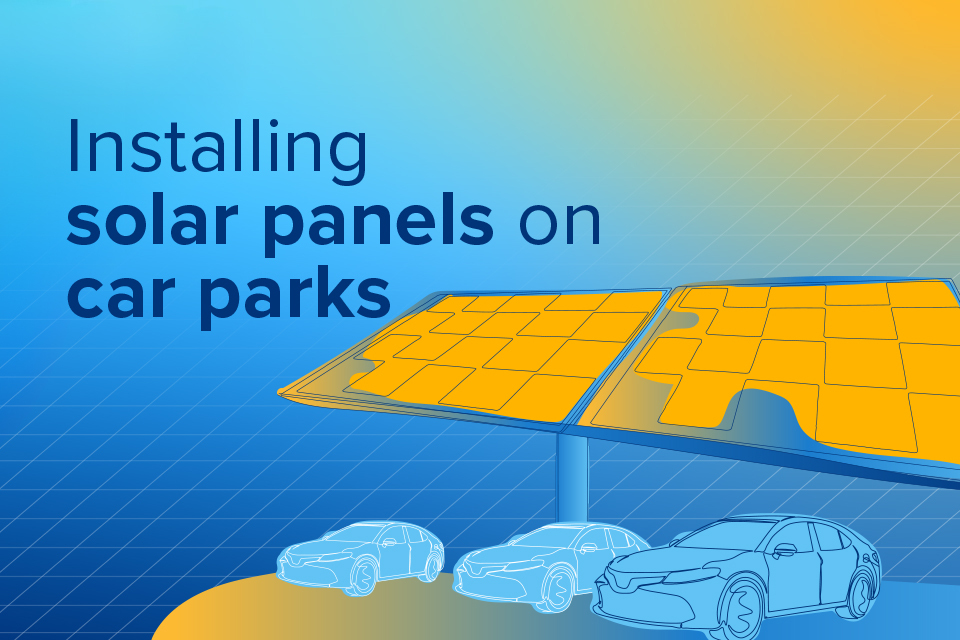
Solar Car Parks Offer Better Deal for Drivers, Firms
Motorists could benefit from cheaper charging costs and more transparent prices at the pump.
- Supermarkets, retail parks and offices could save up to tens of thousands on their energy bills per year by installing solar power in their car parks
- motorists could benefit from more charging points and shaded parking spots in new ‘solar carports’ through the Plan for Change
- Fuel Finder to drive down prices at the pump and save motorist 1 to 6p per litre
Motorists could benefit from cheaper charging costs through the introduction of solar canopies in car parks to save drivers money as part of the government’s Plan for Change.
The government has today launched a call for evidence to understand how to harness the untapped potential of solar in car parks across England, Wales and Northern Ireland.
Supermarkets, retail parks, and offices could also save money on their energy bills by turning their carparks into ‘solar carports’, saving up to £28,000 a year and powering businesses and homes across the UK.
Petrol and diesel motorists are also set to be supported by the government’s flagship Fuel Finder scheme – which today appointed a supplier to begin the first phase of delivery that requires all petrol stations to share prices within 30 minutes of a change, driving down prices at the pump and saving drivers between 1 to 6p a litre on average.
Mandating solar on car parks supports the government’s mission to become a clean energy superpower, unlocking underutilised space which can be used to power homes and businesses with clean, cheap, secure power.
The Energy Secretary has already approved nearly 3 GW of new solar capacity since July, enough to power the equivalent of 1 million homes. Proposals would help boost Britain’s energy security by bringing bills down in the long-term for families through the Plan for Change.
Energy Secretary Ed Miliband said:
Right now, the sun is shining on hundreds of thousands of car parking spaces across the country which could be used to power our homes and businesses.
We want to work with businesses and car park operators to turn our car parks into solar carports to save families and businesses money with clean, homegrown British energy through our Plan for Change.
Future of Roads Minister Lilian Greenwood said:
We’re committed to ensuring electric car drivers are always close to a charger and can save money when making the switch. Today is another positive example of how we’re harnessing the net zero transition to give drivers more choice and help them get around with greater peace of mind.
There are now more than 76,500 public electric vehicle charging devices available across the UK, as we continue to deliver our Plan for Change by investing £2.3 billion to help drivers switch to electric vehicles while backing British carmakers and protecting jobs.
Solar carports are already mandatory in some European countries, including France and Slovenia, providing their countries with an abundance of cheaper solar power.
Initial estimates suggest that an 80-space car park could save around £28,000 per year in electricity bills by installing solar carports and using all electricity generated. The call for evidence is seeking additional evidence on the potential benefits of the policy.
Companies could also make back the cost of installing solar in carparks by selling energy back to the grid or through long-term power purchase agreements.
Ben Cox, Director at Sovereign Centros from CBRE, Asset Managers of Metrocentre said:
With the largest number of EV charging points of any shopping centre in the country, and over 5,000 PV panels in action, including those on car ports in Green and Blue Mall car parks, we have already taken great steps to secure a more sustainable future.
We welcome the Department for Energy Security & Net Zero’s call for evidence which will allow us to invest further into these facilities to support the government’s national agenda.
Solar canopies have proven to improve the experience for customers, providing shaded cover for cars during heatwaves, creating a cooler environment for both vehicles and pedestrians.
The Clean Power Action Plan set an ambition of 45 to 47 GW by 2030. Ground-mounted solar currently occupies around less than 0.1% of total and area of the UK.
It is estimated that the solar sector supports 17,500 direct and indirect jobs across the UK, with more jobs possible from the rollout of mandatory solar carports.
Case studies
- The Bentley Motors manufacturing facility in Cheshire is the largest solar carport in the UK, with 10,000 solar panels and a capacity of 2.7 MW. Along with other installed solar arrays and 6.6 MW of battery storage, the car park enables all of Bentley’s manufacturing operations to be powered by solar
- Eastbourne District General Hospital became the first solar carport to power a hospital, cutting the hospital’s emissions by 222 tonnes in the first year
- Stourton Park & Ride in Leeds hosts a 1.2 MW solar carport, providing EV charging infrastructure for 26 spaces
- The Metrocentre in Gateshead has over 5,300 rooftop and carport solar panels providing enough power to supply 40% of their annual electricity usage.
Notes
The illustrative estimates of the potential financial savings associated with the installation of solar canopies has been produced to serve as a reference point for further respondents. For the calculation, a car parking business would install 80 solar canopy solar bays over a 2.4m x 5.0m car parking space , with a generation intensity of 1 MW for every 5000m2 . Considering the practical limitations of solar power generation, we assume a load factor of 11% which was published in our cost generation report . To then calculate the saving if 100% of this electricity was self-consumed by the business, we used the average of our central commercial electricity prices forecasts from 2025 to 2054.
The homes powered estimate reflects the equivalent number of homes that could be powered based on an estimate of the annual generation from the 3GW of solar capacity approved by the Energy Secretary since July. It is not possible to continuously power a home through intermittent renewables – this capacity will work alongside the rest of the electricity system to power homes and businesses. The estimate is calculated using household consumption estimates sourced from the published Subnational Electricity and Gas Consumption Report and actual load factors as per the Energy Trends publication. The actual generation will vary based on site specific factors.
See more information on solar industry statistics .
https://www.gov.uk/government/news/better-deal-for-motorists-and-businesses-with-solar-car-parks


